Adnoc spurs downstream gas expansions
13 October 2023
 This package on the UAE’s downstream sector also includes:
This package on the UAE’s downstream sector also includes:
> Adnoc Gas picks site for planned LNG terminal
> Adnoc Gas receives prices for Estidama package
> Adnoc and Dusup sign key gas supply agreement
> Adnoc receives bids for gas pipeline packages
> Adnoc receives prices for sales gas pipeline packages
> Adnoc Gas awards $3.6bn Project Meram contract

Demand for natural gas has risen exponentially in this decade, with its share in the global energy mix set to grow further in the decades to come.
Regional energy producers are deploying major capital expenditure programmes to increase their gas production and processing capabilities to cater to growing demand.
The UAE is striving to achieve self-sufficiency in gas production by 2030. With this objective in mind, Abu Dhabi National Oil Company (Adnoc) has committed significant investment towards expanding its midstream and downstream gas capabilities.
These projects seek to increase the availability of gas for utility providers and industrial customers in the UAE and ramp up ethane output to grow the country’s petrochemical sector and its derivatives ecosystem.
 Hail and Ghasha galvanises UAE upstream market
Hail and Ghasha galvanises UAE upstream market
Ruwais LNG project
Adnoc Gas, the gas processing business of Adnoc, has finalised the location for its planned liquefied natural gas (LNG) export terminal. The facility will have the capacity to produce about 9.6 million tonnes a year (t/y) of LNG from two processing trains, each with a capacity of 4.8 million t/y.
The overall value of the planned project is estimated to be upwards of $4.5bn, based on capital expenditure by operators on similar schemes worldwide.
Adnoc Gas received technical bids from contractors in May for the engineering, procurement and construction (EPC) works on the project, which will be built in Ruwais Industrial City in Abu Dhabi’s Al-Dhafrah region.
Adnoc Gas had originally planned to build the LNG terminal in the UAE emirate of Fujairah, which sits outside the Strait of Hormuz on the coast of the Gulf of Oman. In early May, however, the company announced it was shifting the location of the project from Fujairah to Ruwais, Abu Dhabi.
Sales gas pipeline network
Adnoc Gas is progressing the Estidama project, which is crucial to enhancing Adnoc’s sales gas pipeline network across the UAE. The project aims to cater to rising demand for gas from industrial consumers across the UAE, particularly in the Northern Emirates.
Contractors submitted commercial bids in August for combined package numbers 4 and 7. The combined package involves laying a new pipeline from the Al-Shuwaib pig launcher and pig receiver station to the Sajaa gas facility in Sharjah.
The scope also covers building a new gas pipeline between BVS-2/KP28.7 in Abu Dhabi to Dubai’s Margham gas facility to meet increased gas demand from Adnoc Gas’ customer Dubai Supply Authority (Dusup).
EPC works on the estimated $2bn-plus Estidama project have been divided into seven packages. Abu Dhabi-based contractor Integrated Specialised General Contracting Company (Iscco) won package 1, understood to have a contract value of $18m, in December 2021.
In early July, Adnoc Gas awarded contracts worth a combined $1.34bn for two other packages of the Estidama project. UK-headquartered Petrofac was awarded the EPC contract for package 2 of the Estidama project, estimated to be worth $720m.
A consortium of Abu Dhabi’s National Petroleum Construction Company (NPCC) and Lebanon-headquartered CAT Group won Estidama package 3, which is valued at about $630m.
Contractors submitted technical bids for package 6 in August 2022 and commercial bids by 21 November. Work on package 6 entails the installation of a 52-inch, 74-kilometre pipeline from Sweihan to Al-Shuwaib in Abu Dhabi and building two block valve stations.
Package 5 is expected to be tendered separately to contractors as part of a planned second phase of the sales gas pipeline upgrade project.
As per the original project schedule, EPC works on the Estidama project are due to be completed in 2025.
Ramping up ethane output
Adnoc Gas is in charge of one of the world’s largest gas processing complexes in Abu Dhabi, with the capacity to process about 8 billion cubic feet a day from its Asab, Bab, Bu Hasa, Habshan and Ruwais plants.
Increased volumes of ethane production will allow the company to commercialise it to supply feedstock to Borouge for its under-construction Borouge 4 petrochemicals complex, as well as to derivatives plants in the upcoming Taziz complex. Adnoc Gas intends to achieve this through the Maximise Ethane Recovery & Monetisation (Meram) project.
Adnoc Gas awarded a $3.6bn contract for Project Meram to a consortium of NPCC and Spanish contractor Tecnicas Reunidas in early August, with EPC work on the project starting later that month. The scope of work on the contract includes commissioning new gas processing facilities to enable an optimised supply to the Ruwais industrial complex, Adnoc Group said.
The strategic Meram project aims to achieve dual objectives, Adnoc stated.
The first goal is to increase ethane extraction by 35 to 40 per cent from Adnoc Gas’ existing onshore facilities in the Habshan gas processing complex by constructing new gas processing facilities.
The second goal is to unlock further value from existing feedstock and deliver it to Ruwais via a 120km natural gas liquids (NGL) pipeline.
LATEST NEWS FROM THE UAE's CHEMICALS SECTOR:
> Lummus seeks to expand Abu Dhabi office
> Firms express interest for Abu Dhabi methanol project
> Borouge and Borealis launch recycled products range
> Fertiglobe makes $84m profit in second quarter
> Borouge announces $231m profit in second quarter
> Adnoc opens formal chemicals integration talks with OMV
Taziz chemicals complex
Meanwhile, investors in the Taziz petrochemicals derivatives-producing industrial complex in Ruwais are pushing ahead with their projects.
Taziz – a 60:40 joint venture (JV) of Adnoc and Abu Dhabi’s industrial holding company ADQ – is overseeing the development of the sprawling industrial complex, which will mainly draw ethylene feedstock from the Borouge 4 facility to produce several in-demand chemicals.
A JV of UAE-based Fertiglobe, South Korea’s GS Energy and Japanese investment firm Mitsui awarded Italian contractor Tecnimont the main EPC contract for its planned blue ammonia project in the Taziz Industrial Chemicals Zone in February.
The JV has appointed KBR to provide the technology licence, basic engineering design, proprietary equipment and catalyst for the low-carbon ammonia plant, which will have a capacity of 1 million t/y.
India’s Reliance Industries is also an investor in the Taziz complex, having forged a partnership with Taziz and Abu Dhabi-based Shaheen Chem Holdings Investment to invest $2bn in developing three chemical plants producing chlor-alkali (940,000 t/y), ethylene dichloride (1.1 million t/y) and polyvinyl chloride (360,000 t/y).
Switzerland-based Proman has committed to building the UAE’s first methanol plant at Taziz, with a planned production capacity of 1.8 million t/y. The Proman-Taziz JV completed the contractor prequalification process for the EPC tendering round for the methanol production project in August. The operator is expected to issue the main EPC tender later this year.
As projects in the first phase of the chemicals complex move forward, Taziz is also understood to be gearing up for a second phase to more than double the number of chemicals produced at the derivatives hub.
Exclusive from Meed
-
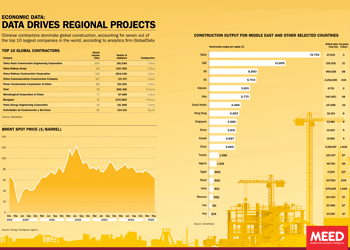 June 2025: Data drives regional projects
June 2025: Data drives regional projects30 June 2025
-
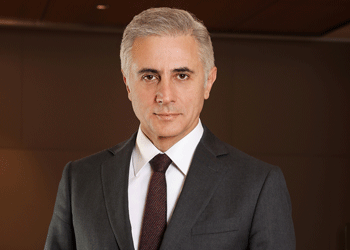 UAE-Turkiye financial links strengthen
UAE-Turkiye financial links strengthen30 June 2025
-
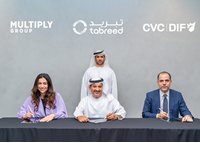
-
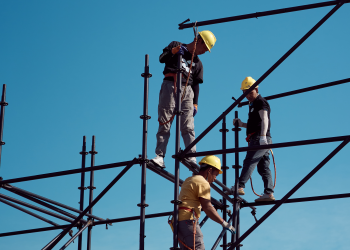 Iraq approves Basra housing project
Iraq approves Basra housing project30 June 2025
-
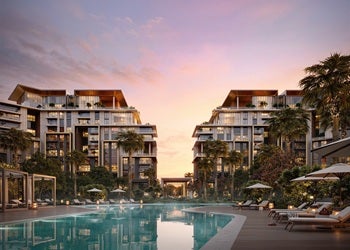 Meraas announces Dubai City Walk expansion
Meraas announces Dubai City Walk expansion30 June 2025
All of this is only 1% of what MEED.com has to offer
Subscribe now and unlock all the 153,671 articles on MEED.com
- All the latest news, data, and market intelligence across MENA at your fingerprints
- First-hand updates and inside information on projects, clients and competitors that matter to you
- 20 years' archive of information, data, and news for you to access at your convenience
- Strategize to succeed and minimise risks with timely analysis of current and future market trends

Related Articles
-
 June 2025: Data drives regional projects
June 2025: Data drives regional projects30 June 2025
Click here to download the PDF
Includes: Top 10 Global Contractors | Brent Spot Price | Construction output
To see previous issues of MEED Business Review, please click herehttps://image.digitalinsightresearch.in/uploads/NewsArticle/14171168/main.gif -
 UAE-Turkiye financial links strengthen
UAE-Turkiye financial links strengthen30 June 2025
 This package on UAE-Turkiye relations also includes:
This package on UAE-Turkiye relations also includes:> UAE-Turkiye trade gains momentum
> Turkiye’s Kalyon goes global

Turkish bank DenizBank is one of Turkiye’s leading private banks and, as a wholly owned subsidiary of Emirates NBD since 2019, it is playing a leading role in developing business links between the UAE and Turkiye.
Recep Bastug, who was appointed as DenizBank’s CEO in 2024, says there is great potential for trade between the two countries.
“Turkiye is a growing country,” he says. “We’ve had volatility over the past five years, but the Turkiye economy and the banking sector have been able to manage those periods successfully.”
Having spent years with international institutions such as BBVA, Bastug has vast experience in the banking sector. “Turkish banks, especially private ones like DenizBank, are very successful. In terms of capital, balance sheet structure and digital transformation, we are in a strong position,” he says.
 Solid fundamentals
Solid fundamentalsTurkiye’s fundamentals remain solid with a diversified export-oriented economy, a young and skilled population of 85 million, and relatively low debt levels. “We are not a highly leveraged country. Our household debt-to-GDP ratio is low. With the right policy mix, we offer high potential for foreign investors,” says Bastug.
That potential is increasingly being realised through growing engagement with the GCC and the UAE. “Turkiye’s connection with the Gulf is going up, and DenizBank is set to play a serious role in these relations. Day by day, Turkish companies are expanding their footprint in the region.”
GCC projects
Baştug says that many of these companies approach DenizBank to help facilitate their entry into Gulf markets. “Some of our clients are extremely well capitalised, but others need support for major projects. Just recently, one Turkish company announced a $3bn project in the region. We’re helping them connect with Emirates NBD and navigate the local financial landscape.”
DenizBank is actively supporting the creation of trilateral partnerships – particularly between Turkiye, the UAE and Saudi Arabia. “We see huge opportunity in forming financial strongholds across these markets, leveraging Turkiye’s contractor experience, the UAE’s capital and Saudi Arabia’s scale,” says Baştug.
DenizBank is already delivering results. “With Emirates NBD, we’ve identified 10 strategic cooperation areas, including trade finance, payments and capital markets. Thanks to this partnership, Emirates NBD has become the number one debt capital markets bank in Turkiye, even ahead of global players.”
One area of growing activity is initial public offering (IPO) participation. “We’ve launched a mutual fund that allows Turkish private banking clients to participate in IPOs from the region, including from the UAE and Saudi Arabia. It’s a diversification strategy and helps retain wealth within the group.”
Turkiye’s connection with the Gulf is going up, and DenizBank is set to play a serious role in these relations. Day by day, Turkish companies are expanding their footprint in the region
Recep Bastug, DenizBankInflation ends
Despite the current inflationary environment, Bastug says there is a clear inflection point ahead. “We expect 2027 to be a turning point. Once we exit the inflationary accounting regime [in Turkiye], DenizBank will become one of the biggest contributors to Emirates NBD’s global balance sheet. Last year, we contributed $1.2bn. In 2027, it will be significantly more.”
DenizBank is the fifth-largest private bank in Turkiye with about a 5% market share. “The largest private bank is at 13%. It’s not easy to close that gap – but we will do it. Our long-term goal, aligned with our shareholder, is to become the biggest and most successful private bank in the country.”
The bank is especially focused on agriculture, SMEs, and export financing – sectors that are deeply relevant to
Turkiye’s economic growth and to regional demand. “We are the leading agricultural bank in Turkiye, and we believe strongly in the sector’s future – both for local consumption and exports.”Regional opportunities
Bastug also sees potential for engagement beyond the GCC, including in post-conflict reconstruction. “In the past, Turkiye had strong trade volumes with Syria. Even during wartime, commercial links remained. Once a stable environment emerges, there will be opportunities – especially in infrastructure.”
While a physical branch presence is not currently being considered, DenizBank is prepared to support Turkish contractors operating in neighbouring countries. “We have the relationships and expertise to facilitate this growth. And culturally, we’re well aligned with the region – it helps make business smoother.”
As Turkiye re-establishes economic momentum and Gulf economies look to deliver on long-term visions, DenizBank is positioning itself for a more active role in the region in the future. “We are preparing the bank for the next stage, and with the backing of Emirates NBD, we’re confident in our ability to lead.”
READ MORE
> UAE-Turkiye trade gains momentum
> Turkiye’s Kalyon goes globalhttps://image.digitalinsightresearch.in/uploads/NewsArticle/14170372/main.gif -
 Multiply agrees to sell Pal Cooling to Tabreed and CVC
Multiply agrees to sell Pal Cooling to Tabreed and CVC30 June 2025
Abu Dhabi-based investment company Multiply Group has agreed to sell all of its shares in its district cooling subsidiary Pal Cooling Holding (PCH) for AED3.8bn ($1bn) to a consortium comprising Engie-backed National Central Cooling Company (Tabreed) and CVC DIF.
The transaction is still subject to regulatory approvals.
MEED exclusively reported in May that a team comprising Tabreed and CVC was holding exclusive discussions to acquire PCH.
Multiply Group initially acquired a 100% stake in PCH and its subsidiaries in July 2021.
Multiply Group has been advised by Standard Chartered and Clifford Chance. Tabreed and CVC DIF have been advised by Citi, Synergy Consulting and White & Case.
The transaction brings together two of the UAE’s leading district cooling players. PCH was founded in 2006 and operates five active district cooling plants across the UAE. The company maintains eight long-term concessions and strategic partnerships with some of the UAE’s leading real estate developers, servicing key residential, commercial and mixed-use developments – most notably on Abu Dhabi’s Reem Island.
Tabreed owns and operates 92 plants, including 76 in the UAE, five in Saudi Arabia, eight in Oman, one in Bahrain, one in India and one in Egypt, in addition to other international projects and operations.
https://image.digitalinsightresearch.in/uploads/NewsArticle/14170511/main.jpg -
 Iraq approves Basra housing project
Iraq approves Basra housing project30 June 2025
Iraq has approved plans to build a housing project in Basra that will offer about 5,000 homes in the first phase to tackle the country’s rising housing shortage.
The project, which is endorsed by Iraq’s National Investment Commission (NIC), will cover an area of about 3 square kilometres.
According to local media reports, Basra province governor Asaad Al-Idani said the project has already been awarded to a developer.
Iraq has been gradually recovering since the war. The government initially prioritised infrastructure and public housing to stimulate economic growth, improve living standards and attract foreign investment.
More recently, benefitting from higher oil prices and a period of relatively stable governance, Baghdad has expanded its focus to reconstructing and modernising the country’s deteriorating infrastructure.
The Iraqi construction market has also seen significant investments from private real estate developers from the region. In May, Egyptian real estate developer Ora Developers announced that it had started construction on the Al-Wardi residential city project, which consists of more than 100,000 residential units covering about 61 million square metres (sq m) on the southeastern side of Baghdad.
The move is the latest sign of international investors’ growing appetite for developing real estate in Iraq as part of the country’s post-war building initiatives.
Also in May, another Egyptian firm, Talaat Moustafa Group Holding, said it was in negotiations with the NIC to develop a mixed-use project. The project, which will cover an area of about 14 million sq m and will be located in the southwest of Baghdad, is expected to contain about 45,000 residential units.
The positive sentiment has been particularly buoyed by a robust 2024 budget, which allocated nearly $42bn to transport, social infrastructure and housing initiatives.
Looking ahead, Iraq’s construction industry is expected to register an annual average growth rate of 4.9% in 2025-28, supported by further investments in energy, infrastructure and housing projects, according to UK analytics firm GlobalData.
MEED’s June 2025 report on Iraq includes:
> COMMENT: Iraq maintains its pace, for now
> GOVERNMENT & ECONOMY: Iraq’s economy faces brewing storm
> OIL & GAS: Iraqi energy project value hits decade-high level
> PIPELINES: Revival of Syrian oil export route could benefit Iraq
> POWER: Iraq power sector turns a page
> CONSTRUCTION: Iraq pours billions into housing and infrastructure projects
> DATABANK: Iraq forecast dips on lower oil priceshttps://image.digitalinsightresearch.in/uploads/NewsArticle/14170011/main.png -
 Meraas announces Dubai City Walk expansion
Meraas announces Dubai City Walk expansion30 June 2025
Register for MEED’s 14-day trial access
Local real estate developer Meraas has announced the City Walk Crestlane project as it continues to expand its City Walk residential community in the Al-Wasl area of Dubai.
The City Walk Crestlane comprises two residential towers offering 198 one-, two-, three-, four- and five-bedroom units.
The project is expected to be completed and handed over by the third quarter of 2028.
Earlier this month, Meraas, which is part of Dubai Holding Real Estate, awarded a construction contract for another project at City Walk.
The local firm Naresco Contracting was awarded a AED450m ($123m) contract for the main construction works on its Central Park Plaza residential project at City Walk.
The project involves constructing two towers with 23 and 20 floors. Together, they will have 212 residential units.
In May, Meraas awarded another local firm, Al-Sahel Contracting Company, a AED300m contract for the main construction works on Elara, which is phase seven of the Madinat Jumeirah Living masterplan in Dubai.
The project involves building three residential towers with 234 apartments.
https://image.digitalinsightresearch.in/uploads/NewsArticle/14169472/main.jpg


